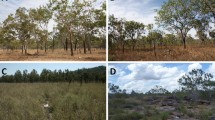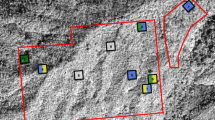Abstract.
We surveyed 165 sites to determine the ecological factors influencing the distribution, abundance, and occurrence of polygyny in the red imported fire ant (Solenopsis invicta) in Louisiana. On average, sites had 220 nests/ha, 14% of mounds were polygyne, and 22% of sites had ≥ one polygyne mound. The density of nests and ants per site both increased with the proportion of mounds that were polygyne and the organic and phosphorous content of the soil but decreased with longitude, latitude, and the silt: clay, calcium and sodium content of the soil. Ant density also declined with ambient relative humidity. These multivariate models explained ~25% of the variation in nest and ant density per site. Mean mound size per site increased with the phosphorous content of the soil and the number of nests at the site suggesting that prospective queens may select sites that are conducive to produce large mounds. Mean nest size, however, decreased with the proportion of nests that were polygyne and soil potassium while mounds in forests were typically larger than those in residential areas. Overall, this model accounted for 29% of the variation in mean nest size per site. Polygyne sites were patchily distributed across Louisiana. The probability of a site being polygyne declined with mean monthly temperature for 1999 – 2003 and distance to the nearest commercial waterway suggesting that shipping activities may have played a role in the introduction of polygyne colonists to an area. Forested sites were also less likely to be polygyne than those in residential areas. Finally, the density of polygyne nests and ants increased with latitude whereas that of the monogyne form generally declined with latitude. The abundance of both social forms was also greater when they occurred alone. These data are consistent with the hypothesis that monogyne and polygyne S. invicta compete with one another.
Similar content being viewed by others
Author information
Authors and Affiliations
Corresponding author
Additional information
Received 28 July 2006; revised 2 March 2007; accepted 29 May 2007.
Rights and permissions
About this article
Cite this article
Milks, M.L., Fuxa, J.R., Richter, A.R. et al. Multivariate analyses of the factors affecting the distribution, abundance and social form of Louisiana fire ants, Solenopsis invicta . Insect. Soc. 54, 283–292 (2007). https://doi.org/10.1007/s00040-007-0947-4
Published:
Issue Date:
DOI: https://doi.org/10.1007/s00040-007-0947-4




